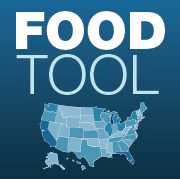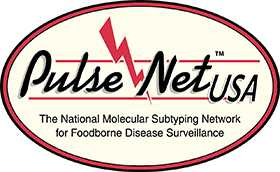Surveillance & Data Systems
Many surveillance systems are used in the United States to provide information about the occurrence of foodborne and waterborne diseases. Most of CDC’s surveillance systems rely on data from state and local health agencies. Some focus on specific pathogens and have been used extensively for decades. More recently, new surveillance methods have emerged which improve the quality, quantity, and timeliness of data (e.g., sentinel surveillance systems and national laboratory networks).
Each surveillance system plays a role in detecting and preventing disease and outbreaks.
Foodborne Disease Active Surveillance Network (FoodNet)

FoodNet conducts surveillance in 10 sites for infections of nine bacterial and parasitic pathogens transmitted commonly through food and for hemolytic uremic syndrome. By estimating the number of foodborne illnesses, monitoring changes in incidence over time, and attributing illnesses to specific foods and settings, FoodNet provides a foundation for food safety policy and prevention efforts in the United States.
- Surveillance Reports: FoodNet Annual Reports
- Studies and Surveys: FoodNet Studies and Surveys
Foodborne Disease Outbreak Surveillance System (FDOSS)
 FDOSS collects data on foodborne disease outbreaks, defined as the occurrence of two or more cases of a similar illness resulting from the ingestion of a common food. FDOSS provides insights into the agents and foods that cause illness and the settings where contaminated foods are prepared.
FDOSS collects data on foodborne disease outbreaks, defined as the occurrence of two or more cases of a similar illness resulting from the ingestion of a common food. FDOSS provides insights into the agents and foods that cause illness and the settings where contaminated foods are prepared.
- Surveillance Reports: Annual Reports of Surveillance for Foodborne Disease Outbreak
- Search FDOSS Data (since 1998): FOOD Tool
National Antimicrobial Resistance Monitoring System for Enteric Bacteria (NARMS)

NARMS is an interagency public health surveillance system that tracks antimicrobial resistance in foodborne and other enteric (intestinal) bacteria from humans, retail meats, and food animals in the United States. The NARMS program at CDC helps protect public health by providing information about resistance in bacteria isolated from ill people, the ways in which resistance is spread, and how resistant infections differ from susceptible infections.
Reports
National Surveillance of Bacterial Foodborne Illnesses
National Surveillance collects reports about illnesses identified from laboratory testing to detect outbreaks, monitor trends, and measure effectiveness of prevention programs. CDC conducts national surveillance for botulism, cholera and other Vibrio illnesses, Listeria infections, typhoid and paratyphoid infections, Salmonella, Shigella, Shiga toxin-producing Escherichia coli (STEC), and Campylobacter.
Direct Links to Reports:
PulseNet USA Team
 PulseNet is a national laboratory network that connects foodborne illness cases to detect outbreaks. PulseNet uses DNA fingerprinting, or patterns of bacteria making people sick, to detect thousands of local and multistate outbreaks. Since the network began in 1996, PulseNet has improved our food safety systems through identifying outbreaks early. This allows investigators to find the source, alert the public sooner, and identify gaps in our food safety systems that would not otherwise be recognized. PulseNet International performs a similar role for foodborne illnesses globally.
PulseNet is a national laboratory network that connects foodborne illness cases to detect outbreaks. PulseNet uses DNA fingerprinting, or patterns of bacteria making people sick, to detect thousands of local and multistate outbreaks. Since the network began in 1996, PulseNet has improved our food safety systems through identifying outbreaks early. This allows investigators to find the source, alert the public sooner, and identify gaps in our food safety systems that would not otherwise be recognized. PulseNet International performs a similar role for foodborne illnesses globally.
Waterborne Disease and Outbreak Surveillance (WBDOSS)
WBDOSS collects data on waterborne disease and outbreaks associated with recreational water, drinking water, environmental, and undetermined water exposures.
Additional Programs and Systems
-
National Outbreak Reporting System (NORS)
Web-based platform used by local, state, and territorial health departments in the United States to report all waterborne and foodborne disease outbreaks and enteric disease outbreaks transmitted by contact with environmental sources, infected persons or animals, or unknown modes of transmission to CDC -
National Electronic Norovirus Outbreak Network (CaliciNet)
Links norovirus clusters to outbreaks with a common food source, as identifying emerging norovirus strains. The network allows public health agencies to determine which samples are part of the same outbreak. CaliciNet went live in March 2009 and currently has 25 states certified for participation, reporting norviruses that are spread either through food or person to person, important given that norovirus causes the majority of foodborne illness in the United States. CaliciNet is linked to the National Outbreak Reporting System (NORS).
- Page last reviewed: April 18, 2016
- Page last updated: September 29, 2016
- Content source:


 ShareCompartir
ShareCompartir